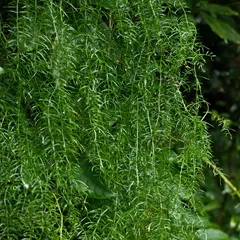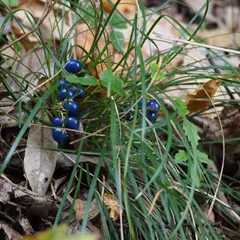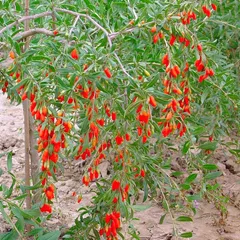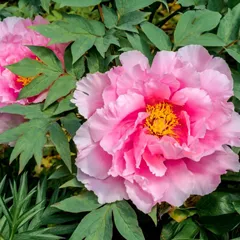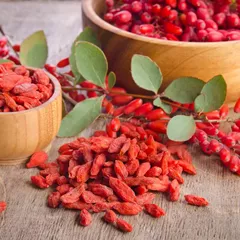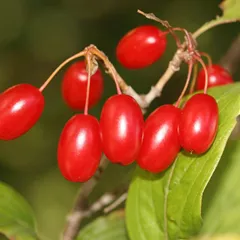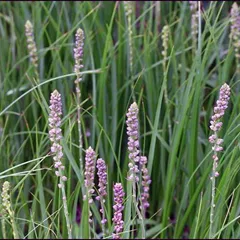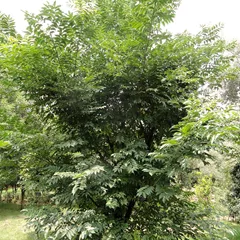He Che Da Zao Wan
He Che Da Zao Wan
Chinese: 河车大造丸
Pinyin: Hé Chē Dà Zào Wán
Other names: Placenta Great Fortifying Pill
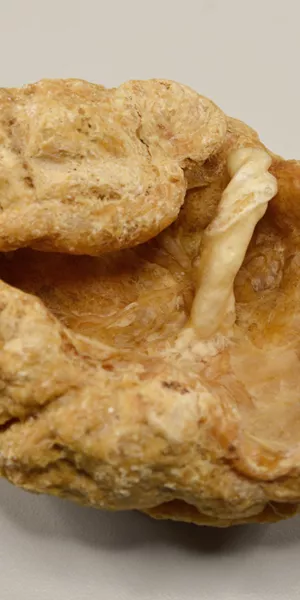
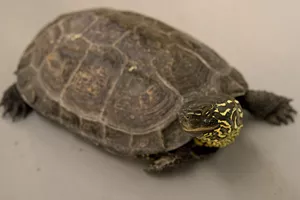
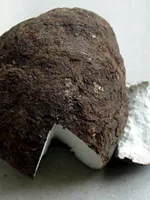
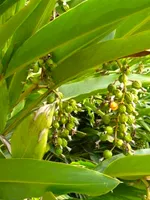




He Che Da Zao Wan
He Che Da Zao Wan
Chinese: 河车大造丸
Pinyin: Hé Chē Dà Zào Wán
Other names: Placenta Great Fortifying Pill
Number of ingredients: 11 herbs
Formula category: Formulas that tonify Yin and Yang
Conditions for which it may be prescribed: Early menstruationScanty menstruationAbsence of menstruation
- Tonifies the Kidneys
- Strengthens the Directing and Penetrating Vessels
- Regulates the periods
The information provided here is not a replacement for a doctor. You shouldn't use it for the purpose of self-diagnosing or self-medicating but rather so you can have a more informed discussion with a professional TCM practitioner.
He Che Da Zao Wan is a 11-ingredient Chinese Medicine formula with Human Placentas (Zi He Che) as a principal ingredient.
It belongs to the category of formulas that tonify Yin and Yang. Its main actions are: 1) tonifies the Kidneys and 2) strengthens the Directing and Penetrating Vessels.
In Chinese Medicine health conditions are thought to arise due to "disharmonies" in the body as a system. These disharmonies are called "patterns" and the very purpose of herbal formulas is to fight them in order to restore the body's harmony.
In this case He Che Da Zao Wan is used by TCM practitioners to fight patterns like Kidney and Liver Yin Deficiency, Spleen or Kidney Qi Deficiency or Kidney-Deficiency. From a Western Medicine standpoint, such patterns can give rise to a range of conditions such as absence of menstruation, early menstruation or scanty menstruation for instance.
On this page, after a detailed description of each of the eleven ingredients in He Che Da Zao Wan, we review the patterns and conditions that He Che Da Zao Wan helps treat.
The eleven ingredients in He Che Da Zao Wan
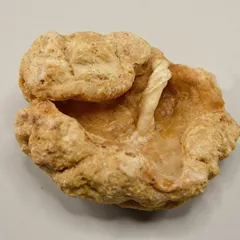
Zi He Che is a king ingredient in He Che Da Zao Wan. Like the name indicates, it means it has more power than other ingredients in the formula.
1. Human Placentas (Zi He Che)
Part used: Dried placenta of a healthy women
Nature: Warm
Meridian affinity: HeartKidneyLiverLung
Category: Tonic herbs for Yang Deficiency
In general Zi He Che's main actions are as follows: "Tonifies the Liver and Kidneys and assists the Essence. Tonifies the Qi and Blood."
In the context of He Che Da Zao Wan, it is used because it nourishes the Directing and Penetrating Vessels.
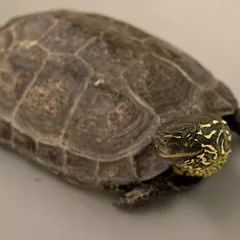
2. Tortoise Plastrons (Gui Ban)
Part used: Carapace and plastron
Nature: Cool
Meridian affinity: HeartKidneyLiver
Category: Tonic herbs for Yin Deficiency
In general Gui Ban's main actions are as follows: "Nourishes the Yin and holds down the Yang. Strengthens the Kidneys and strengthens the bones. Cools the Blood, stops uterine bleeding. Nourishes the Heart. Promotes Healing."
In the context of He Che Da Zao Wan, it is used because it nourishes the Directing and Penetrating Vessels.
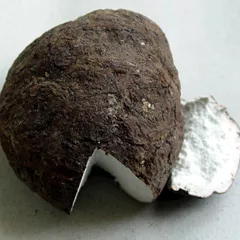
3. Poria-Cocos Mushrooms (Fu Ling)
Part used: Dried sclerotium
Nature: Neutral
Taste(s): Sweet
Meridian affinity: HeartKidneyLungSpleen
Category: Herbs that drain Dampness
In general Fu Ling's main actions are as follows: "Encourages urination and drains Dampness. Tonic to the Spleen/Stomach. Assists the Heart and calms the Spirit."
In the context of He Che Da Zao Wan, it is used because it resolves Dampness.
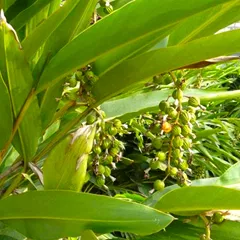
4. Amomum Fruits (Sha Ren)
Part used: Dried ripe fruit
Nature: Warm
Taste(s): Pungent
Meridian affinity: KidneySpleenStomach
Category: Aromatic herbs that transform Dampness
In general Sha Ren's main actions are as follows: "Warms the Spleen and transforms Dampness. Promotes the movement of Qi for Damp and Stagnant conditions of the Stomach and Spleen. Settles a restless fetus and stops morning sickness. Prevents cloying and Stagnation sometimes caused by tonifying herbs."
In the context of He Che Da Zao Wan, it is used because it resolves Dampness.
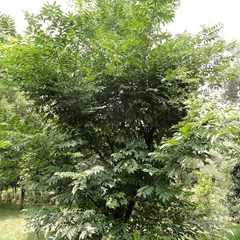
5. Phellodendron Bark (Huang Bo)
Part used: Dried bark
Nature: Cold
Taste(s): Bitter
Meridian affinity: BladderKidneyLarge intestine
Category: Herbs that clear Heat and dry Dampness
In general Huang Bo's main actions are as follows: "Expels Damp-Heat in the Lower Burner. Clears Kidney Yin Deficient Heat. Applied externally or toxic Fire, especially associated with Dampness."
In the context of He Che Da Zao Wan, it is used because it resolves Dampness.

6. Prepared Rehmannia (Shu Di huang)
Part used: Prepared dried root tuber
Nature: Warm
Taste(s): Sweet
Meridian affinity: KidneyLiver
Category: Tonic herbs for Blood Deficiency
In general Shu Di huang's main actions are as follows: "Tonifies the Blood. Tonifies the Yin of the Kidneys."
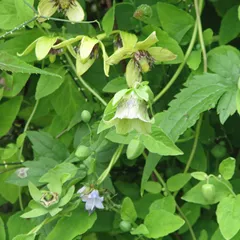
7. Codonopsis Roots (Dang Shen)
In general Dang Shen's main actions are as follows: "Tonifies the Spleen and Lung Qi. Assists in the secretion of Bodily Fluids."
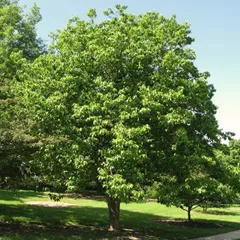
8. Eucommia Bark (Du Zhong)
Part used: Dried stem bark
Nature: Warm
Taste(s): Sweet
Meridian affinity: KidneyLiver
Category: Tonic herbs for Yang Deficiency
In general Du Zhong's main actions are as follows: "Tonifies the Liver and Kidneys. Calms ascendant Liver Yang (hypertension/high blood pressure). Calms a restless fetus."
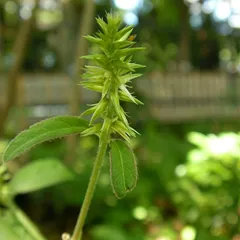
9. Achyranthes Roots (Niu Xi)
Part used: Dried root
Nature: Neutral
Meridian affinity: KidneyLiver
Category: Herbs that invigorate the Blood
In general Niu Xi's main actions are as follows: "Moves Blood and relieves pain in the raw state. Tonic to the Liver and Kidneys and strengthens the bones and sinews. Reduces Damp-Heat in the Lower Burner. Regulates the flow of reckless Blood caused by either ascendant Liver Yang or Yin Deficient Fire."
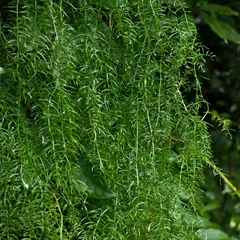
10. Chinese Asparagus Tubers (Tian Men Dong)
In general Tian Men Dong's main actions are as follows: "Nourishes Yin of the Lungs and Kidneys. Expectorates Phlegm."
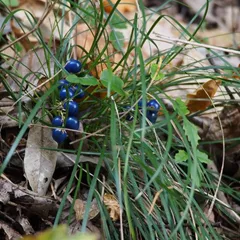
11. Dwarf Lilyturf Roots (Mai Dong)
Part used: Dried root tuber
Nature: Cool
Meridian affinity: HeartLungStomach
Category: Tonic herbs for Yin Deficiency
In general Mai Dong's main actions are as follows: "Replenishes Yin Essence and promotes secretions. Lubricates and nourishes the Stomach. Soothes the Lung. Nourishes the Heart."
Conditions and patterns for which He Che Da Zao Wan may be prescribed
It's important to remember that herbal formulas are meant to treat patterns, not "diseases" as understood in Western Medicine. According to Chinese Medicine patterns, which are disruptions to the body as a system, are the underlying root cause for diseases and conditions.
As such He Che Da Zao Wan is used by TCM practitioners to treat four different patterns which we describe below.
But before we delve into these patterns here is an overview of the Western conditions they're commonly associated with:
Absence of menstruation Early menstruation Scanty menstruation
Again it wouldn't be correct to say "He Che Da Zao Wan treats absence of menstruation" for instance. Rather, He Che Da Zao Wan is used to treat patterns that are sometimes the root cause behind absence of menstruation.
Now let's look at the four patterns commonly treated with He Che Da Zao Wan.
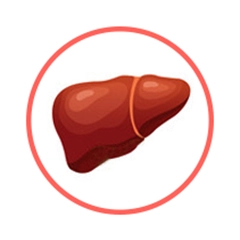
The Liver is a so-called "Zang" Organ. Learn more about the Liver in Chinese Medicine
Kidney and Liver Yin Deficiency
Pulse type(s): Empty (Xu), Floating (Fu)
Tongue coating: Partial absence of coating
Tongue color: Red
Symptoms: Tics Vertigo Fatigue Tinnitus Insomnia Dry eyes Dry hair Dry skin Dizziness Dry mouth Sore back Headaches Dry throat Dry vagina Dry stools Amenorrhea Joint pain Infertility Hot flushes Night sweats Blurred vision Scanty periods Delayed period Excessive tear Lower back pain Lightheadedness Afraid of light Tingling of limbs Diminished hearing Vertical headaches Occipital headaches Nocturnal emissions Chronic sore throat Hot palms and soles Numbness in the limbs Withered and brittle nails Heat in vaginal and vulvar Feeling of heat in the afternoon Spontaneous and nocturnal emissions Soreness and weakness in the lower back
He Che Da Zao Wan is sometimes prescribed by TCM practitioners to treat Kidney and Liver Yin Deficiency. This pattern leads to symptoms such as dizziness, tinnitus, diminished hearing and lower back pain. Patients with Kidney and Liver Yin Deficiency typically exhibit empty (Xu) or floating (Fu) pulses as well as Normal-coloured without coating or with rootless coating.
The Liver stores Blood while the Kidneys store Essence.
Liver Blood depends on Essence for nourishment, while Essence depends on Blood for replenishment. Both have a common source: Grain Qi derived from the Spleen. In terms of Five Elements, the Kidneys nourish the Liver.
A long term Liver Blood... read more about Kidney and Liver Yin Deficiency

The Spleen is a so-called "Zang" Organ. Learn more about the Spleen in Chinese Medicine
Spleen or Kidney Qi Deficiency
Pulse type(s): Deep (Chen), Weak (Ruo)
Tongue color: Pale
Symptoms: Fatigue Dizziness Pale face Palpitations Early periods Lack strength Lower back pain Feeling of cold Shortness of breath Pale menstrual blood Thin menstrual blood Spontaneous sweating Frequent night urination
He Che Da Zao Wan is sometimes prescribed by TCM practitioners to treat Spleen or Kidney Qi Deficiency. This pattern leads to symptoms such as early periods, pale menstrual blood, lower back pain and dizziness. Patients with Spleen or Kidney Qi Deficiency typically exhibit deep (Chen) or weak (Ruo) pulses as well as a pale tongue.

The Kidneys is a so-called "Zang" Organ. Learn more about the Kidneys in Chinese Medicine
Kidney-Deficiency
Pulse type(s): Deep (Chen), Weak (Ruo)
Tongue color: Pale
Symptoms: Tinnitus Back pain Knee pain Dizziness Sore back Pale face Cold limbs Weak knees Amenorrhea Late period Malar flush Night sweats Restlessness Scanty periods Feeling of cold Frequent urination Pale menstrual blood Thin and watery periods Feeling of heat in the evening
He Che Da Zao Wan is sometimes prescribed by TCM practitioners to treat Kidney-Deficiency. This pattern leads to symptoms such as scanty periods, pale menstrual blood, back pain and knee pain. Patients with Kidney-Deficiency typically exhibit deep (Chen) or weak (Ruo) pulses as well as a pale tongue.

The Liver is a so-called "Zang" Organ. Learn more about the Liver in Chinese Medicine
Liver Blood and Kidney Essence Deficiency
Pulse type(s): Deep (Chen), Weak (Ruo)
Tongue color: Pale
Symptoms: Fatigue Dry skin Knee pain Dizziness Dark face Dry mouth Depression Amenorrhea Low energy Dry throat Night sweats Lower back pain Feeling of cold No menstruation by 18
He Che Da Zao Wan is sometimes prescribed by TCM practitioners to treat Liver Blood and Kidney Essence Deficiency. This pattern leads to symptoms such as no menstruation by 18, lower back pain, fatigue and knee pain. Patients with Liver Blood and Kidney Essence Deficiency typically exhibit deep (Chen) or weak (Ruo) pulses as well as a pale tongue.
Formulas similar to He Che Da Zao Wan
Tian Wang Bu Xin Dan is 29% similar to He Che Da Zao Wan
Qing Jing San is 27% similar to He Che Da Zao Wan
Da Ying Jian is 27% similar to He Che Da Zao Wan
Dang Gui Di Huang Yin is 27% similar to He Che Da Zao Wan
Zuo Gui Wan is 27% similar to He Che Da Zao Wan
Zhi Bo Di Huang Wan is 27% similar to He Che Da Zao Wan


